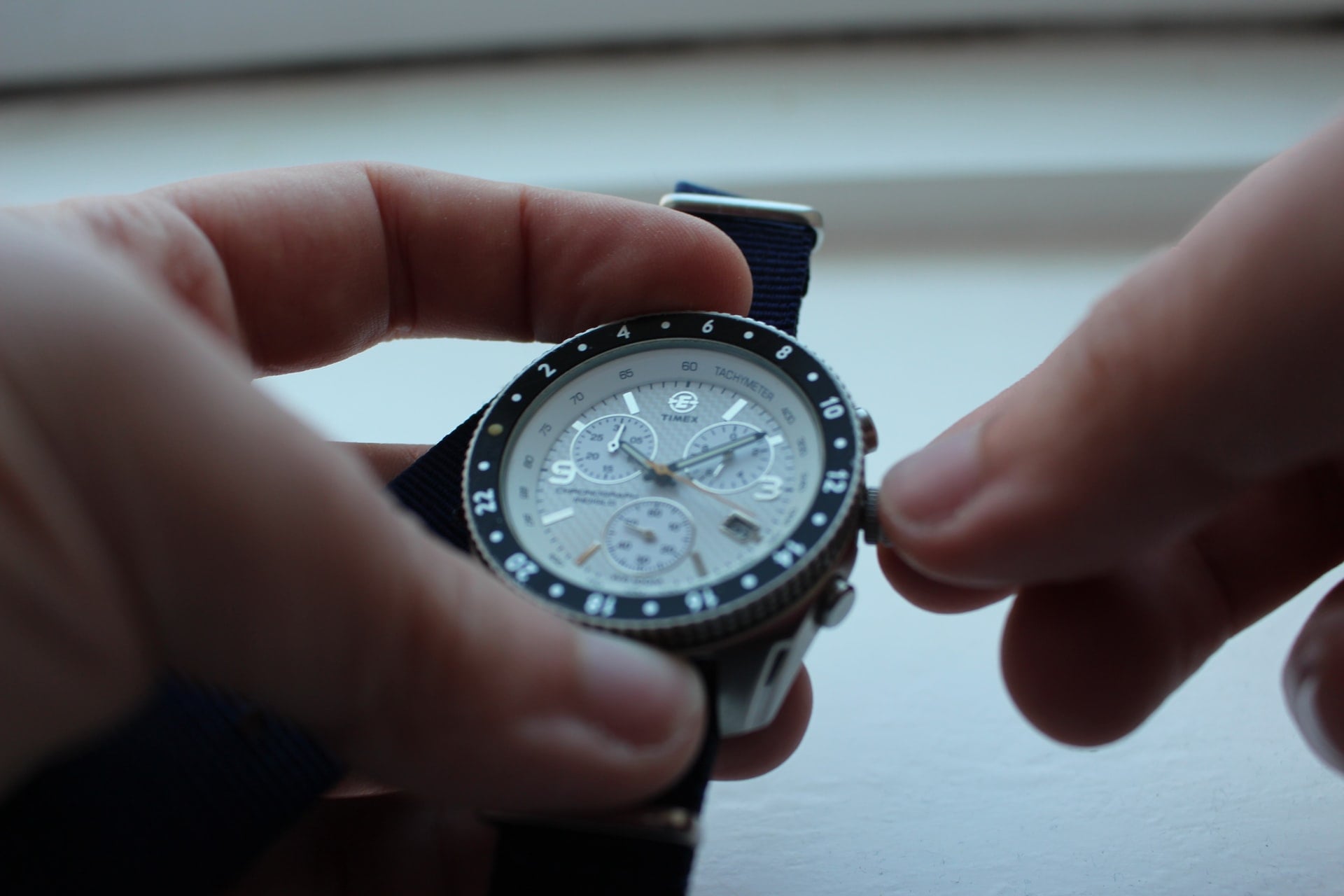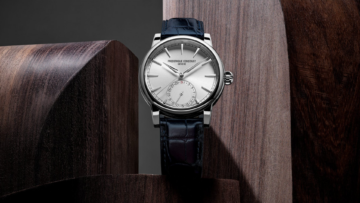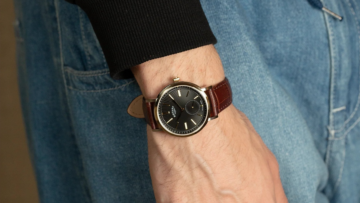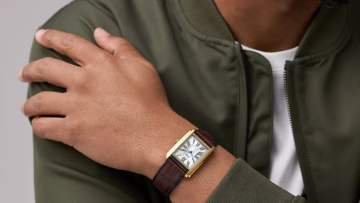Chronograph watches are some of the most popular models on the market due to their classic design and timeless sense of style. Almost every watch brand creates chronograph watches as they tend to be a guaranteed success. This style of watch has been growing in popularity for decades, with some vintage models dating as far back as 1816. Every watch collector ought to have a good chronograph timepiece in their collection for its utility and beauty. Chronograph movements are much more complex than standard movements, so are an excellent way to proudly exhibit top quality watchmaking expertise.
What is a Chronograph Movement?
A chronograph watch can be easily identified by the presence of sub dials and pushers on a timepiece. The sub dials are how the additional functions of a chronograph watch are displayed and the pushers are used to control them. The main use of a chronograph watch is to measure and keep track of time periods in addition to being able to read the current time on a dial. Most of the functions of chronograph watches are now obsolete as modern technologies are more than capable of fulfilling the same tasks. However, many people still choose to wear and use a chronograph watch as they are technically and aesthetically pleasing. There is a definite charm to being able to make use of the functions of a chronograph watch in a way that celebrates traditional watchmaking.
A Brief History of the Chronograph Movement
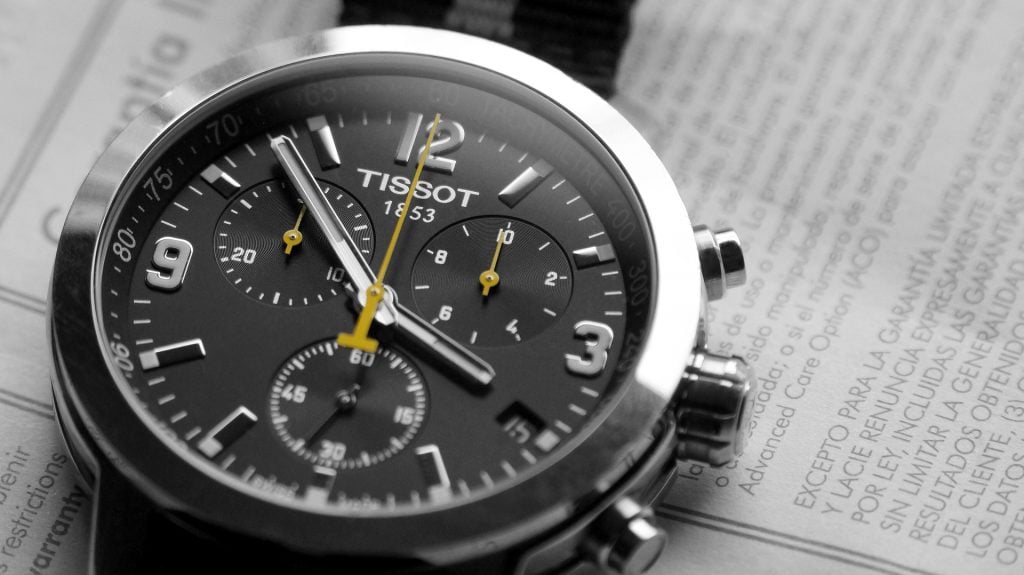
The word ‘chronograph’ comes from the Greek words ‘chronos’ and graph’ which together translate to ‘time writer’. This name was given to the first patented chronograph due to how it worked. It made up of a simple clockwork mechanism in a box and two ink styluses. The mechanism and styluses were connected. The styluses wrote on rotating discs of paper to compare the times of two racehorses on a track. Many people use modern chronograph watches for a very similar purpose today.
In order to make chronographs more accessible and portable, they had to be made smaller. The initial models were made to fit in pocket watch cases and did not have much more function that a standard stopwatch. They were not even able to display the current time. The next iteration of the chronograph only had one button that could be used to start, stop and reset the watch. It was not until 1915 that Gaston Breitling invented the separate pusher chronograph that made the timepieces much easier to use. The two-pusher chronograph that is well-known today was first created some years later.
What are the Different Kinds of Chronograph Movements?
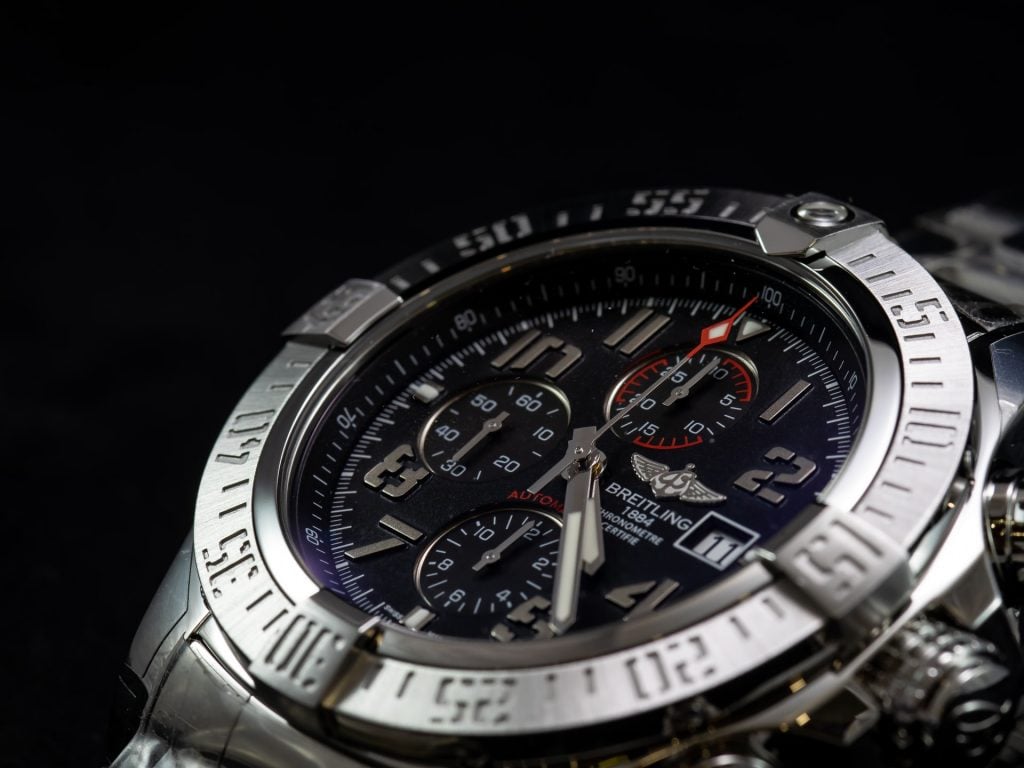
There are two main types of chronograph movements: fully integrated chronograph movements or modular chronograph movements. The key difference between the two types is the level of watchmaking expertise that is required to create them. This will therefore affect the price of the watch. Fully integrated chronograph movements are built directly into the base movement, making them one and the same. This requires specialist watchmaking expertise and so raises the price of these watches considerably. Often this kind of chronograph movement is reserved for luxury brands and timepieces. Modular chronograph movements tend to sit at a much more affordable price point as they are somewhat easier to build. These movements are built separately from the base movement and are attached later in the watchmaking process.
The Different Functions of Chronograph Movements
Chronograph movements can be categorised further by their functions. When selecting a chronograph watch, it is very important to consider what it will be used for as some features may be unnecessary for some collectors. In order to make the most of a chronograph watch, it is best to find one that is perfectly tailored to the wearer’s individual needs.
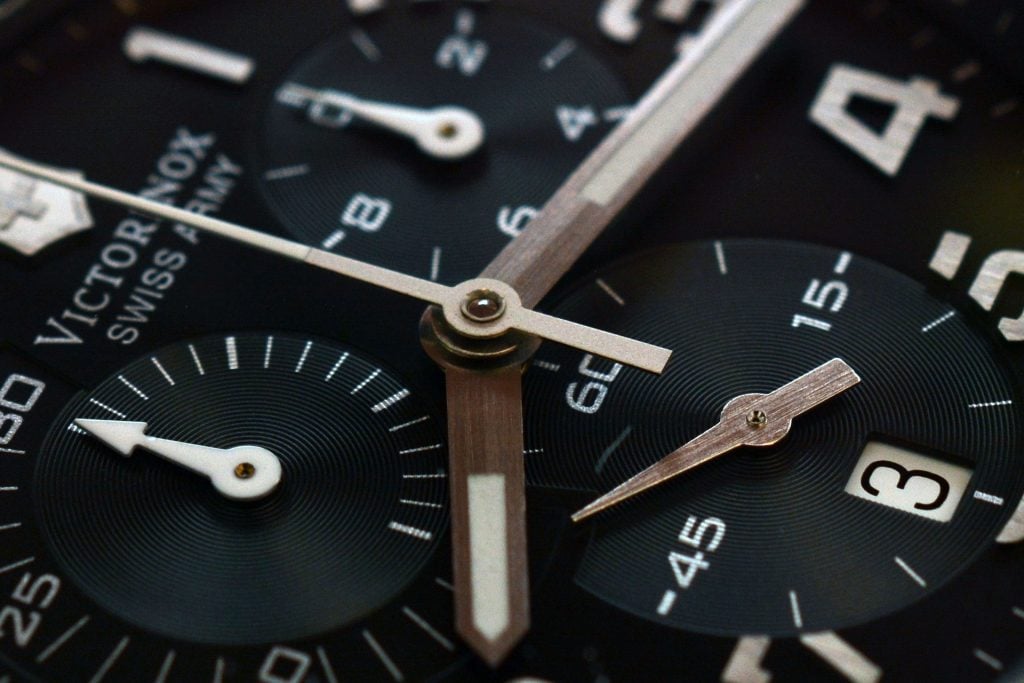
A monopusher chronograph features a single pusher that controls all of the functions. This kind of watch takes inspiration from very early chronograph models and will often be found in vintage style timepieces.
A split-second chronograph features two chronograph second hands that overlap each other. This kind of timepiece can time intermediate and complete durations. This makes it useful for keeping track of lap times during a race.
A flyback chronograph allows for the timing mechanism to be reset without stopping the watch entirely. This would be beneficial when timing multiple short periods of time.
A foudroyante, or flying, chronograph movements feature a totaliser that will display sub-second intervals with a rapidly rotating hand. The majority of these models totalise 1/10th of a second.
Our Chronograph Watch Recommendations
Tissot PRS 516 | Chronograph | Silver Dial | Brown Leather Strap T1316171603200
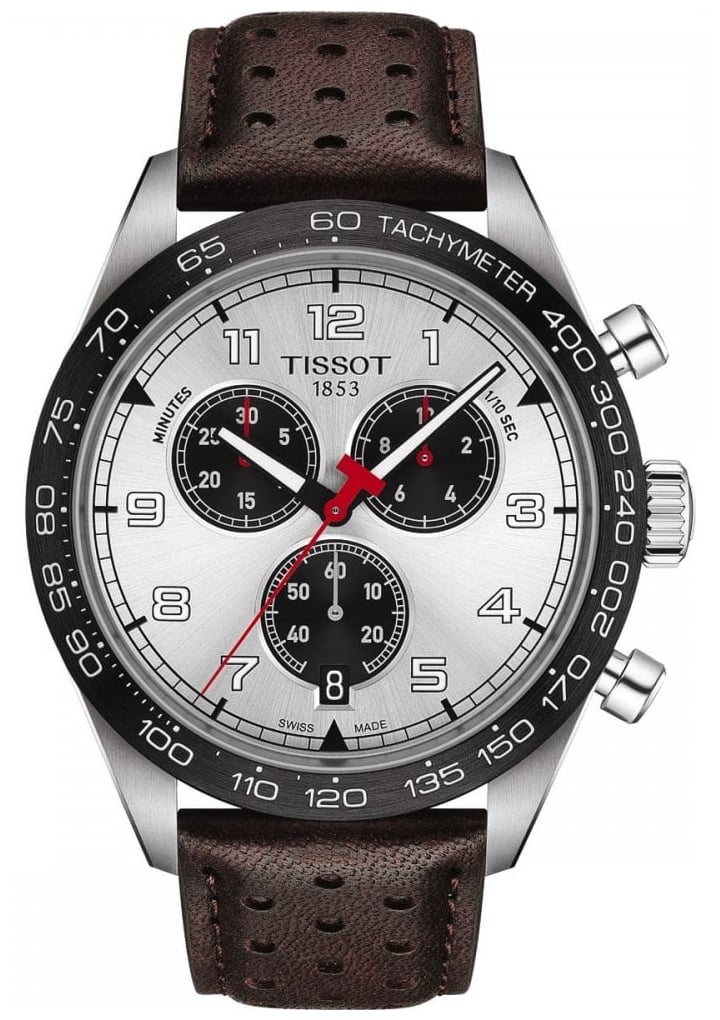
Tissot have been creating watches since the brand was founded in 1853. The brand’s decades of watchmaking expertise have allowed it to become a world leader in the horological industry. This model comes from the Tissot T-Sport collection, which is a family of elegant, yet sporty, timepieces that are each inspired by a different sport or activity.
This chronograph watch features an eye-catching silver dial with three black sub dials. The dial exhibits white hour and minute hands with a red second hand and white Arabic indices. A date aperture is placed in the 6 o’clock position for optimal timekeeping. The dial is protected by scratch resistant sapphire crystal and surrounded by a black tachymeter bezel. A 45mm stainless steel case houses the quartz movement that powers this watch. The chronograph functions include an end-of-life indicator and add and split functions. This watch is secured on the wrist using a brown perforated leather strap.
Sinn 356 Pilot Traditional Chronograph (English Date) Metal Bracelet 356.022-BRACELET
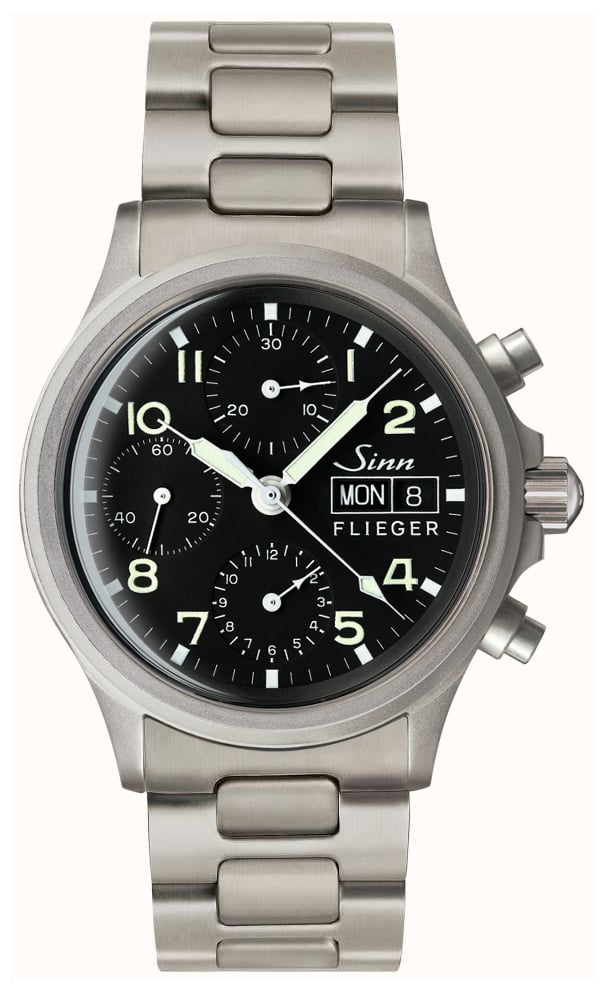
Sinn are famous for the resilience and expertly engineered movements of its timepieces. This watch comes from the brand’s 356 collection which is a family of traditional chronographs. All of the watches in the collection have been inspired by traditional pilot’s chronograph designs. The watch exhibits a black dial with three sub dials and a weekday and date aperture in the 3 o’clock position. The hour, minute and second hands and Arabic indices are treated with a luminous substance to ensure that the dial can be read in the dark. The dial is framed by a stainless steel case that measures 38.5mm in diameter and 15.5mm in depth. The watch is finished with a stainless steel, two-link, bead blasted bracelet that fastens with a deployment clasp. This model is powered by an automatic movement that uses 25 bearing jewels and 28,800 semi-oscillations per hour to power the watch. It is water resistant up to 10 bar.
Maurice Lacroix Aikon Chronograph Quartz Blue Leather AI1018-SS001-432-4
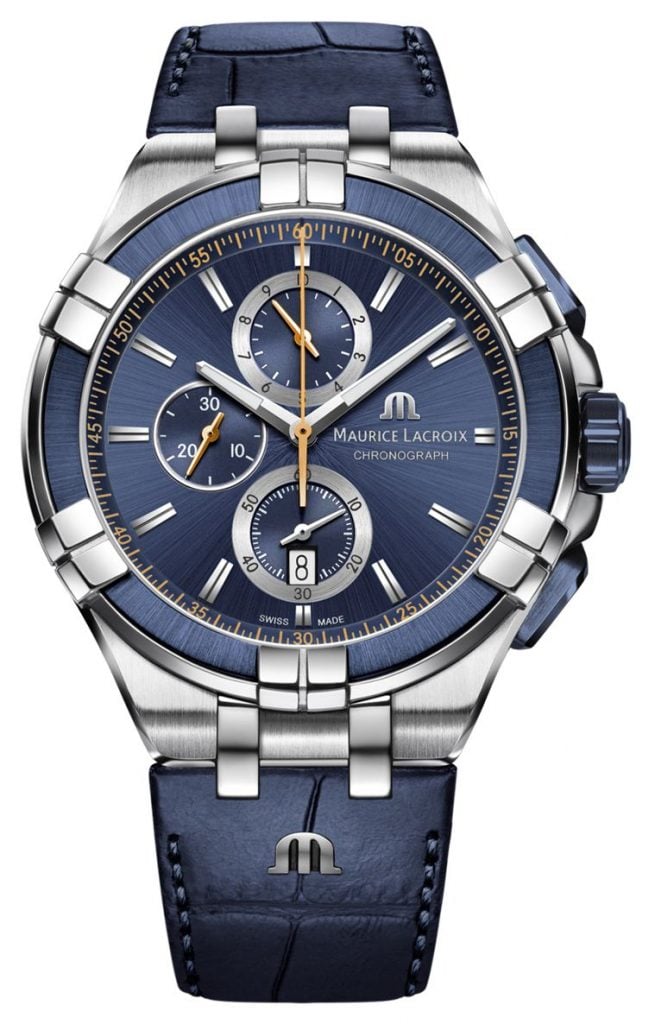
This chronograph watch from Maurice Lacroix will be eye-catching on the wrist due to its elegant blue and silver colour palette. The brand’s Aikon collection was designed to exude luxury and has been popular with fans of the brand since its creation in the 1990s. The blue dial features three silver framed sub dials and a date aperture at 6 o’clock. The dial exhibits silver baton indices, silver hour and minute hands and an orange second hand. The chronograph has a 1/10 second counter and a 30-minute counter. This watch is powered by a battery powered quartz movement which is housed in a 44mm stainless steel case. This model is water resistant up to 100 metres (10 bar) and secured on the wrist using a blue calf leather strap that fastens with a butterfly buckle.
Hamilton IntraMatic | Mechanical | Chronograph | Black Dial | Black Leather Strap H38429730
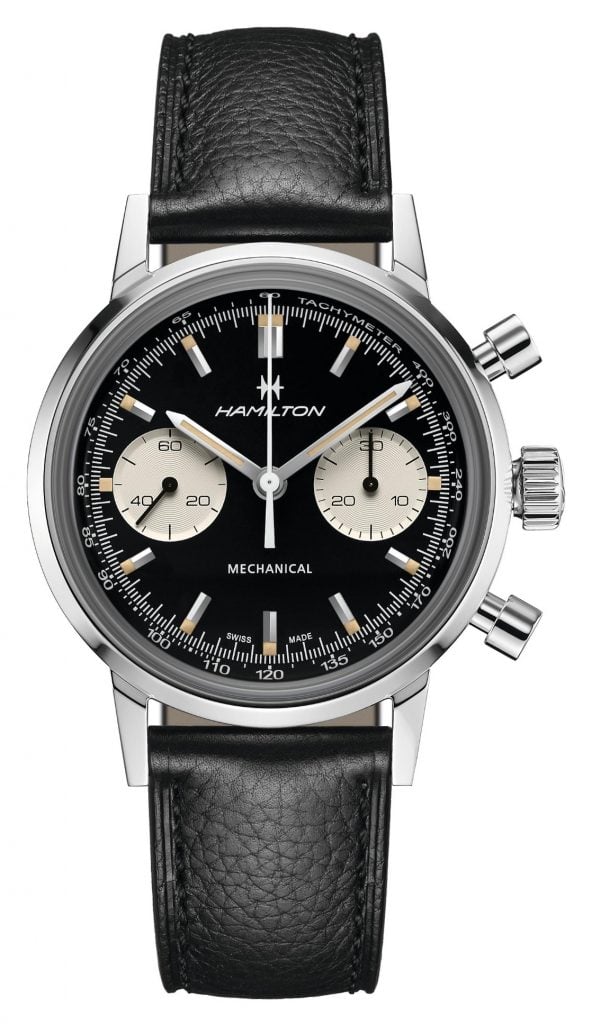
Hamilton’s American Classic collection embodies the brand’s heritage and versatility. This model has a chic vintage style and is made of high-quality and long-lasting materials. The watch features a black dial with two white sub dials, creating a contrasting and striking look. The dial exhibits silver hands and indices and is framed by a black tachymeter inner bezel for additional utility. Sapphire glass protects the dial and a stainless steel case surrounds it. The 40mm case houses the H-51 mechanical chronograph movement that powers the watch. This movement provides the watch with a power reserve of up to 60 hours. This model is water resistant up to 100 metres (10 bar) making it suitable for some water-based activities. The watch is finished with a black leather strap that fastens with a pin buckle.
Lacoste | Men’s | Boston | Stainless Steel Bracelet | Black Dial 2011079
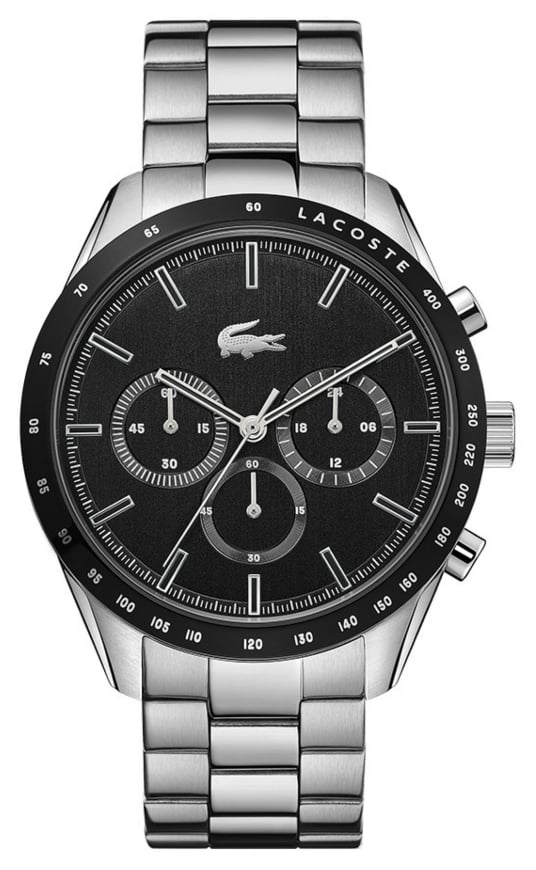
This elegant chronograph is perfect for watch collectors on a budget. Lacoste’s classic tennis inspired style translates seamlessly into the brand’s watch collection. Despite the low price point, Lacoste watches are high performing and reliable. This model features a black dial with three sub dials, providing plenty of function to the watch. The dial exhibits silver hands and baton indices. A black bezel surrounds the dial and a stainless steel case frames it. The case measures 42mm in diameter and 10.4mm in height. This watch is powered by a precise quartz movement and features mineral glass to protect the dial. A stainless steel bracelet secures the watch on the wrist.
What are your thoughts on our answer to the question of ‘what is a chronograph movement’? Will you be adding a chronograph watch to your collection? Let us know in the comments below!

